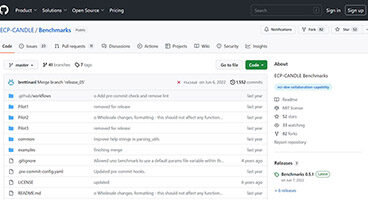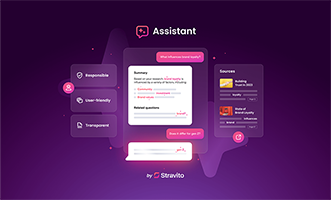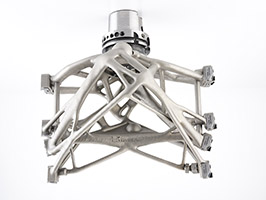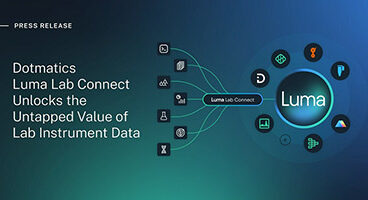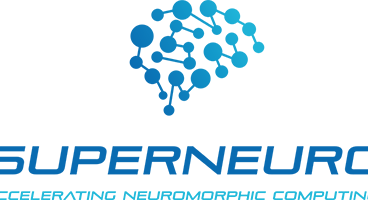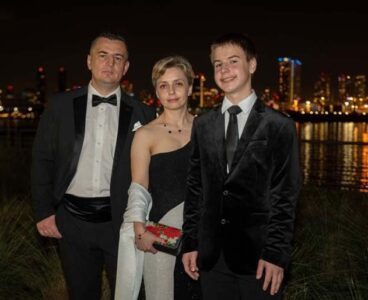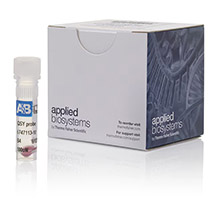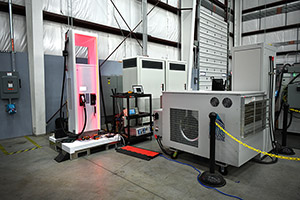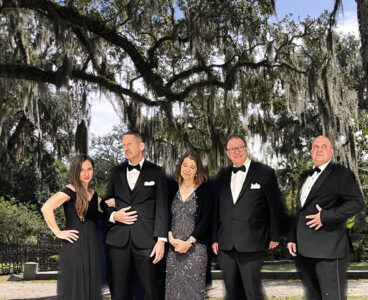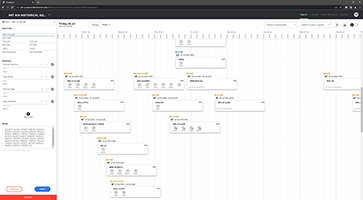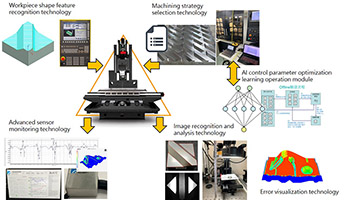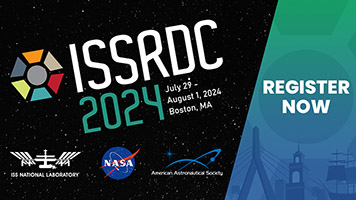Los Alamos National Laboratory’s Fieldable Atomic Beam Isotopic Analyze (FABIA) is a portable instrument for conducting isotopic analysis of nuclear materials in the field. This device is an asset for energy production, global security, and nuclear medicine because of its small size, portability, and simplicity of operation. In the case of nuclear non-proliferation, the International…
Variorum: Vendor-Agnostic Computing Power Management is today’s R&D 100 winner of the day
Lawrence Livermore National Laboratory’s Variorum is an open-source software library that enables users to access the power, energy, and performance metrics of low-level hardware dials across different architectures through vendor-neutral APIs. It is a key component of the U.S. Department of Energy’s Exascale Computing Project (ECP) and the Argo Project, which focuses on node-level power…
AI demand continues to grow faster than supply, in this week’s R&D Power Index
The R&D World Index (RDWI) for the week ending April 19, 2024, closed at 3,486.41 for the 25 companies in the RDWI. The Index was down -3.24% (or -116.89 basis points). Seven RDWI members gained value last week from 0.03% (Merck & Co.) to 2.54% (AbbVie). Eighteen RDWI members lost value last week from -0.35%…
CANDLE (CANcer Distributed Learning Environment) is the R&D 100 winner of the day
Developer: Argonne National Laboratory Co-developer: Oak Ridge, Lawrence Livermore, and Los Alamos National Laboratories, and Fredrick National Laboratory for Cancer Research The CANDLE software suite offers unparalleled deep learning benchmarks to evaluate the performance of new deep learning accelerator hardware. It also advances solutions for cancer researchers and other scientific applications. Moreover, complex workflows using…
Stravito’s new Assistant is a conversational insights companion advancing generative AI
Stravito, the enterprise insights platform democratizing access to market research in the world’s largest organizations, is making a major leap forward in its generative AI journey. Today the company unveils Stravito Assistant, a trusted insights companion that helps users find answers faster, ask better questions, and immediately leverage a wealth of insights to inform real-world…
Q-CTRL hires defense industry leader to expand business partnerships in US and UK
Q-CTRL, pioneer of quantum infrastructure software to make quantum technologies useful, announced the appointment of Vince McBeth as principal business development defense and Public Sector. In his new role, McBeth will oversee Q-CTRL’s business development strategy in Washington D.C. and the U.K. as the company deepens its stake in the 2021 AUKUS trilateral security partnership.…
Chip manufacturing explodes with AI growth, in this week’s R&D Power Index
The R&D World Index (RDWI) for the week ending April 12, 2024, closed at 3,603.30 for the 25 companies in the RDWI. The Index was down -2.05% (or -75.52 basis points). Five RDWI members gained value last week from 0.93% (Toyota) to 4.11% (Apple). Twenty RDWI members lost value last week from -0.12% (Cisco) to…
Additive manufactured cutting tool for precision machining is the R&D 100 winner of the day
Kennametal has developed a new class of additive manufactured tools using innovative lightweight structures to increase the stiffness-to-weight ratio, reducing mass and increasing machining performance for challenging applications. The innovative cutting tool was engineered with numerical refinement techniques and finite element analysis simulation. These techniques made it possible to easily create a complex, highly refined…
Luma Lab Connect unlocks value of lab data to accelerate scientific R&D decision-making
R&D scientific software provider Dotmatics announces the launch of Luma Lab Connect, which helps R&D laboratories automatically ingest data from instruments or data sources and centralize it in one place to increase accuracy and accelerate decision-making. Luma Lab Connect extracts descriptive metadata and experiment results from files and makes data available across labs and experiments…
SuperNeuro: An Accelerated Neuromorphic Computing Simulator is R&D 100 winner of the day
Neural simulations at a large scale often suffer from computational inefficiencies that limit their scalability and their ability to improve neural structures for specific applications. Oak Ridge National Laboratory’s SuperNeuro is a Python-based neural simulator that addresses these limitations and provides AI practitioners with a fast and scalable solution. It also allows users to simulate…
Sanofi reprioritizing its R&D structure, in this week’s R&D Power Index
The R&D World Index (RDWI) for the week ending April 5, 2024, closed at 3,678.82 for the 25 companies in the RDWI. The Index was down -0.07% (or -2.73 basis points). Five RDWI members gained value last week from 0.16% (Alphabet/Google) to 8.60% (Meta Platforms). Nineteen RDWI members lost value last week from -0.44% (AstraZeneca…
For drug discovery, comprehensive genomic analysis is essential
Next-generation sequencing (NGS) tools have been a game-changer in the halls of drug discovery, where rapid and affordable sequencing has enabled faster characterization of samples, the ability to interrogate individual cells, and more frequent monitoring of cell lines for genetic drift, among other capabilities. While these platforms have contributed to significant advances in drug discovery…
Olena Palasyuk, Ames National Laboratory R&D Technician of the Year
For Olena Palaysuk, family has been the key to her success as a highly accomplished scientist at Ames National Laboratory. Her parents encouraged her to get into materials science and chemistry. Her mother, also a chemist, was her inspiration, and her husband and children are the support system behind the scenes. “My family, my husband…
New Applied Biosystems TaqMan QSY2 probes enable multiplexing of research
Biopharma assay developers and clinical research labs are under pressure to save time and reduce costs while assuring accuracy and delivering reproducible results. This can be accomplished by maximizing the number of targets per sample using multiplexing. The new Applied Biosystems TaqMan QSY2 probes* from Thermo Fisher Scientific demonstrate better assay performance retention when transitioning…
Cerberus: Cybersecurity for EV Charging Infrastructure — R&D 100 winner of the day
Researchers anticipate a large network of EV charging equipment to be an attractive target for adversaries or criminal enterprises. Idaho National Laboratory’s Cerberus system — relying on basic sensors and computer hardware linked together in a smart configuration — sharply limits or sometimes eliminates damage to assets and human health. Recent work demonstrated that high-power…
The great lab of the future debate: Modular or singular approach?
Technology is transforming all facets of our lives, and even the most entrenched industries are evolving in exciting ways. In spaces that rely on R&D, the lab of the future represents a way to execute scientific advancements more quickly and efficiently than ever before — and with greater precision. As such, innovation can thrive. It…
Korean chip firm to build plant near Purdue, in this week’s R&D Power Index
The R&D World Index (RDWI) for the week ending March 29, 2024, closed at 3,681.55 for the 25 companies in the RDWI. The Index was down -0.13% (or -4.67 basis points). Eighteen RDWI members gained value last week from 0.06% (IBM) to 6.54% (Merck & Co.). Seven RDWI members lost value last week from -0.46%…
R&D 100 moving gala awards ceremony to famed cemetery
We’re dying to see what the world’s preeminent scientists are cooking up, so the next R&D 100 Award ceremonies are being moved for the first time to the historic Bonaventure Cemetery in beautiful Savannah, Georgia! Heralded as one of the most beautiful cemeteries in the United States, Bonaventure is also famous for its starring role…
University-based cybersecurity centers receive $15 Million for research and training
From the DOE: The U.S. Department of Energy (DOE) announced $15 million in funding to establish six university-based electric power cybersecurity centers that will foster collaborations across the energy sector to address gaps in energy security research and provide cybersecurity education programs. Each university, selected by the DOE’s Office of Cybersecurity, Energy Security, and Emergency…
Two groundbreaking experiments planned for the upcoming solar eclipse
From SwRI Southwest Research Institute is leading two groundbreaking experiments — on the ground and in the air — to collect astronomical data from the total solar eclipse that will shadow a large swath of the United States on April 8, 2024. SwRI’s Dr. Amir Caspi leads the Citizen Continental-America Telescopic Eclipse (CATE) 2024 experiment,…
Puckboard is the R&D 100 winner of the day
MIT Lincoln Laboratory Co-developer: RevaComm Department of the Air Force, MIT AI Accelerator, MIT, U.S. Air Force 15th Wing, U.S. Air Force 60th Air Mobility Wing, U.S. Air Force 437th Airlift Wing, Headquarters Air Mobility Command, Air Force Research Laboratory, Assistant Secretary of the Air Force (Installations, Environment, and Energy), Raytheon BBN Puckboard, a collaborative…
Nvidia cements AI leadership with more powerful CPU, in this week’s R&D Power Index
The R&D World Index (RDWI) for the week ending March 22, 2024, closed at 3,686.22 for the 25 companies in the RDWI. The Index was up 1.92% (or 69.27 basis points). Fourteen RDWI members gained value last week from 1.45% (Meta Platforms) to 8.59% (Toyota). Eleven RDWI members lost value last week from -0.08% (AstraZeneca…
Micrometer-based, Customized Production System Technology is today’s R&D 100 winner of the day
The accuracy, stability, and reliability of machine tools are crucial in precision machining. Adding intelligent capabilities to machine tools, such as online accuracy detection, cutting heat compensation, cutting chatter monitoring, and early warning systems, can be powerful tools to enhance product competitiveness. Safety concerns are paramount when it comes to human life, especially in the…
Early registration opens for 2024 International Space Station R&D Conference in Boston
This July, the 13th annual International Space Station Research and Development Conference (ISSRDC) returns to Boston, where leaders from the commercial sector, U.S. government agencies, and academic communities will assemble to highlight innovations and opportunities through our nation’s orbiting outpost. ISSRDC will take place July 30 — August 1, 2024, at the Marriott Copley Place…
Supercharging fuel cells with caffeine
From Chiba University Fuel cells, while promising, are expensive due to high catalyst requirements to increase the oxygen reduction reaction (ORR) activity. In a breakthrough, researchers found that adding caffeine to the electrodes can improve the ORR activity of platinum electrodes 11 times. This discovery can enhance the efficiency of the fuel cell, reduce the…




